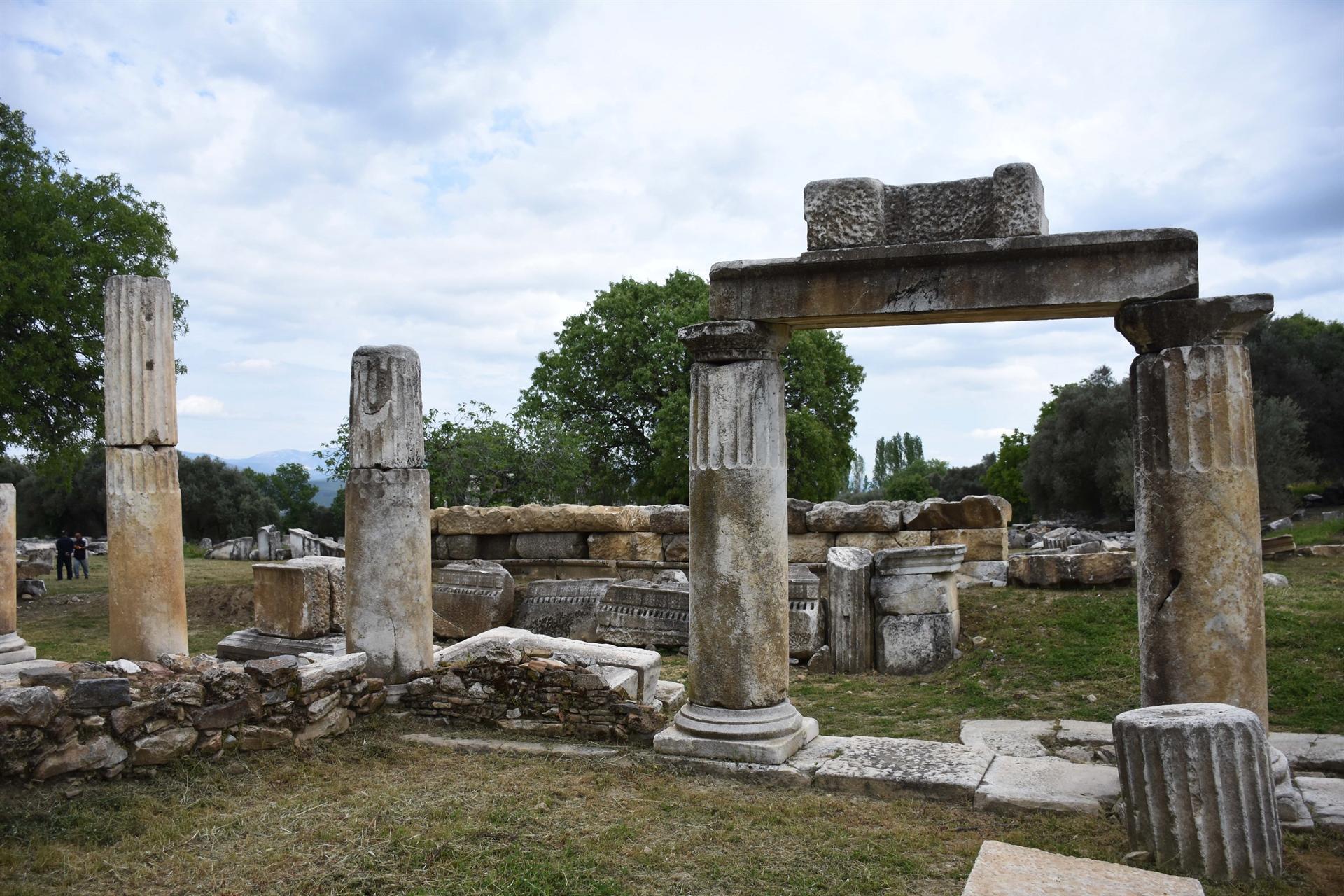
In the 3,000-year-old Lagina Sanctuary - once the center of fortunetelling and the pagan faith in ancient times - pillars from 2,000 years ago will soon welcome visitors again.
More than 20 pillars – which fell down over time – will be erected again in their original location as part of a project launched by the Culture and Tourism Ministry on March 1 at the site ın the Yatağan district in the western province of Muğla.
Archaeologists are unearthing new artifacts from the ancient site for the first time in 128 years, a process that will last throughout the year.
The excavations, headed by Professor Bilal Söğüt, follow in the footsteps of Osman Hamdi Bey, a Turk who headed excavations 128 years ago.
Archaeologists want to unearth the largest temple built for the goddess of the underworld, Hecate, as well as the altar and ceremony field. The temple, depicting ancient warriors known as Amazons, attracted worshippers from abroad. The city was also a center for fortune-telling.
“These closed places were protecting people from sun in summer and rain in winter. There are pillars in front of them. We want visitors to see these all these pillars, which date back to 2,000 years ago. We will keep them in their original place,” Söğüt said in an interview with the state-run Anadolu Agency.
The artifacts that workers uncover in excavations will be protected and restored to their original locations, he said.
Söğüt said that the field where the sanctuary is located was an important center for the region in the ancient times because the largest temple was built there.
“Lagina is a religious center of Stratonikeia, so we know the temple, altar, entrance door and all areas here. The work here continues systematically; we focused on this area because it is one of the most visited areas,” Söğüt said.
As an archaeological site, Lagina offers a glimpse of the stages of life from the ancient eras to the present time, he said.
With the excavation of more important artifacts and buildings, the site is having a renaissance of visitors from around the country and the world.
In recent years, the site has attracted some 100,000 people of pagan faith, as well as other tourists from around the world. Officials believe those numbers will only increase when the project is finished.